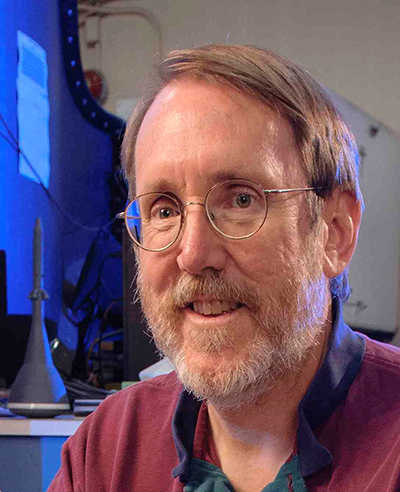Dr. James Ross – NESC Academy Biography
Dr. James Ross has worked at NASA Ames Research Center since 1980, mostly in the area of aerodynamics. His first 17 years at Ames were spent at the National Full-Scale Aerodynamics Complex studying problems in low-speed aerodynamics ranging from wing-fuselage interference to airframe noise reduction. During this time he initiated a collaborative research project with Lawrence Livermore National Laboratory that initially worked on the Department of Energy Heavy Vehicle Drag Reduction Program. A highlight of that work was a comprehensive study of Reynolds number effects on truck aerodynamics performed in the 12-Foot Pressurized Wind Tunnel at Ames that included Particle Image Velocimetry measurements in the wake and in the gap between the tractor and trailer.
Dr. Ross served for seven years as the Chief of the Experimental Aero-physics Branch at Ames. In that role he managed research in a variety of areas including wake-vortex interaction, high-lift aerodynamics and aeroacoustics, hybrid-rocket development, ship air-wake effects on Naval aircraft, and basic fluid mechanics studies of boundary layers, wakes, and flow fields relevant to crystal growth (for the DOE/LLNL National Ignition Facility laser optics). Since giving up his management responsibilities Dr. Ross has served as the Aerodynamic Testing Coordinator for the Multipurpose Crew Vehicle (MPCV) Program and has been involved with approximately 45 wind-tunnel tests of Orion from CM entry/descent aerodynamics through powered tests of the Launch Abort System.
Outside consulting has been a minor, but interesting part of his career. Designing a multi-element rigid sail for a C-Class catamaran and consulting for the winning America3 America’s Cup team are particular highlights. His current outside interest involves designing and building acoustic guitars.
Dr. Ross received a Bachelor of Science Degree in Mechanical Engineering from UCLA and a Master of Engineering Degree in Aerospace Engineering at California Polytechnic State University in San Luis Obispo. He earned his Doctorate Degree in Aerospace Engineering at Iowa State University. In 2011 he received the NASA Outstanding Leadership Medal for his work on the MPCV.




























